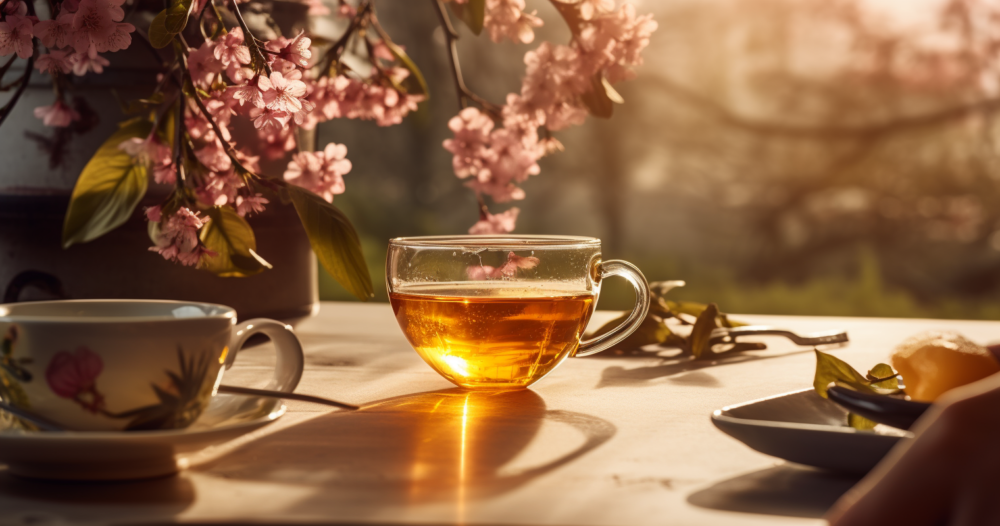Brief History of Tea
A nice cup of tea has undeniably become an indispensable part of our daily lives – a symbol of comfort and wellness itself. Medical research advocates for its remarkable health benefits, highlighting its potential to alleviate inflammation, fortify the immune system, and even contribute positively to dental health.
Tea ceremonies have a rich history in many Asian cultures, with the Japanese tea ceremony (茶道, sadō or chadō, “the way of tea,” or 茶の湯, chanoyu) being perhaps the most renowned. Introduced to Japan from China several centuries ago, tea initially found favour with the priesthood and upper echelons of society, eventually permeating wider circles of Japanese life during the Muromachi Period (1333-1573). It was practitioner Sen no Rikyu (1522-1591) who charted the course for the modern tea ceremony, and these practices are still prevalent today.
Tea Ceremonies
The tea ceremony encompasses specific forms, including a dress code and particular hand movements that vary across different schools. Moreover, participants are encouraged to appreciate the utensils employed, such as the tea bowl itself. Despite its formal exterior, the ceremony serves as a sanctuary from the daily rigors of life, a reprieve from the constant rush, aligning seamlessly with the meditative focus prevalent in much of today’s wellness industry.
Japan, particularly Kyoto, remains a bastion for this practice. For example, KYOTO MAIKOYA offers activities for those keen to experience into this of Japanese heritage. Today, these ceremonies are often offered to Westerners and other tourists as a way of exploring traditional Asian culture, but the wellness sector has not been slow in taking this harmonious practice on board.
The Indian Experience
When we think of India we often visualise tea. Despite experiencing a marginal decline in 2023, North India exported an impressive 59.16 million kg of tea in just the first quarter of the year. So it is not surprising that the tea producers Vahdam have now opened The Vahdam India Tea Room and ‘experience store’ at New Delhi’s Khan Market. This tea room is deliberately targeting the wellness market: customers will be offered the opportunity to taste over 100 teas before purchasing, as well as being able to browse drinkware products and gifts.
Founder Bala Sarda told the press:
“We are thrilled to inaugurate our experience store in India, marking an important milestone in our omni-channel presence strategy. As we continue to expand our offline reach, we aim to complement our strong online presence and provide customers with multiple touchpoints to experience the essence of Vahdam India.”
Vahdam is not alone in promoting tea as part of the wellness lifestyle. Ajit Madan, co-founder of London-based Camellia’s Tea House, who describe themselves as the leading expert in tea wellness sector says:
“When we started the business in 2007, there was very little awareness. In the UK, the average spa manager or director had never really heard of a wellness tea company before, although they were interested in the concept. Since then, there has been a lot of coverage of the health benefits of tea in the media and we now have a lot of spas approaching us.”
Over 95% of spas have a bespoke tea that the company has created for them, such as Nirvana Spa and Monart Day Spa in the UK. The company was founded by Ajit’s sister Lubna Madan, who worked for many years in the therapeutic spa industry before qualifying as a Homeopath. Ajit himself has a degree in Medical Microbiology. CTH thus combines the scientific with the alternative approach.
Tea and Wellness in Other Parts of the World
In Singapore, The Tea Story’s Wellness Tea Bar runs tea-based events at wellness festivals, and in Hong Kong, the Mandarin Oriental includes a tea ceremony as part of its spa packages, allowing you to try ten year-aged pu’erh and rare snow-chrysanthemum tea.
In Bangkok, the KSANA Tea House is defined as an ‘experience centre’ allowing you to explore the ‘essence of time, balance, and escape from chaos.’ Designed by JUTI architects, the name comes from the Sanskrit for ‘balance, and also invokes the Thai “ขณะ” (ka-na) and the Japanese word “刹那” (Setsuna), which mean ‘moment.’ The concept behind this is that the tea house allows visitors to experience a moment out from time, “to create [a] surreal-minimalist atmosphere for people to escape or trance away from the chaos of the city.” Visitors can enjoy matcha green tea served in a fibreglass, cave-like space, intended by the architects to embody the harmony that lies at the centre of the tea ceremony.
In Korea, the tea ceremony (다례) is said to date from the 7th century and has undergone significant revivals ever since the Joseon dynasty in the 1300s. The “Korean Tea Culture Revival Movement” was initiated in the 1970s and now tea ceremonies can be found throughout Korea. They are seen as a form of spiritual cleansing, and if you’re an expat in the region, it’s a good way to experience a part of traditional Korean culture.

